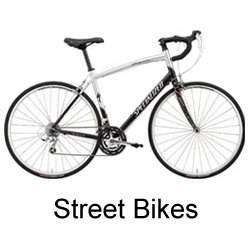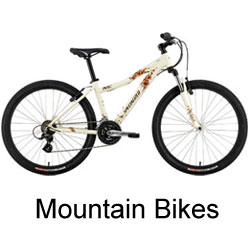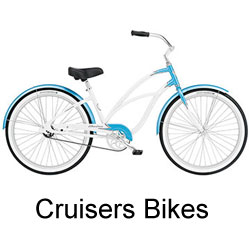Quick Info On Bikes
Bike Anatomy
Bike frames run from heavier, less expensive material to lighter, more expensive. Those materials include:
- Low carbon steel (also known as hi-ten steel)
- High carbon steel alloyed with chromium and molybdenum
- Aluminum
- Titanium
There are many combinations of materials in each category.
Carbon fiber frames are popular in the mid to high-end frames," says Moe. "It's light and has a high fatigue life, plus it dampens vibrations on the road. Generally, aluminum has a greater strength to weight ratio, which is desirable in a mountain bike. Road bike folks traditionally have gone with steel frames. People get very attached to tradition in this industry.
Some people have a preference for specific brands of component parts — hubs, derailers, shifters, brakes, cables, crankset, bottom bracket, and chain. These are added to a bicycle frame in groups called gruppos (for instance, Shimano or Campagnolo are major brands). Gruppo brands have devotees, and the onus is again on the customer to do the research. Ask to see the manufacturer's specifications, called specs, to figure out what parts come with a bike.
Once you get fit for appropriate frame size, it's a good idea to ride a few different models of bicycles. Handlebars and saddles can be switched for other options, or adjusted.
I advise people to get in some real world cycling on a new bike," says Arnold. "Go out and pedal for a couple of hours. Afterwards, if you feel like you just got out of a boxing ring, the bike needs to be adjusted. People who are new to cycling may want to get a bike with an adjustable bar and stem to accommodate less flexible neck and shoulders.


